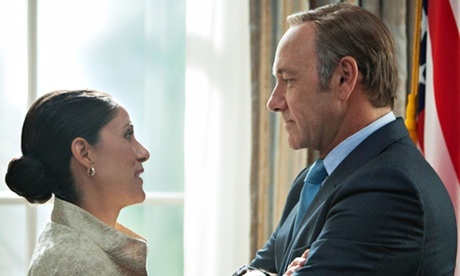Aki’s thoughts on the big data future for TV featured on The Guardian.
Monday 4 August 2014: Figures relating to consumer habit fuels decisions across a growing range of industries – and it’s time for TV to catch up.

In retail, Amazon and Tesco have blazed trails, mining insight from millions of consumers at scale to better buy stock and recommend appropriate products to consumers. In finance, American Express is crunching account holders’ transaction history en masse to identify loyalty and pre-empt churn. And, in sport, player and match data is now so abundant that clubs like Chelsea are examining attributes of players from leagues around the world to spot new talent.
With a few exceptions, however, the TV industry is still not taking full advantage of the data opportunity to plan its future better.
Of the 146 pilots shot in the US in 2013, costing close to $400m, only 56 made it to air. That’s a hit rate of just one in three; and only a minority of those eventually graduated to a first full season. Advertising is also confined to brands with big budgets.
So, is it possible to predict a successful programme from a TV ratings-disaster in the making? The UK ratings panel Barb (Broadcasters’ Audience Research Board) measures TV viewership using a sample of just 5,100 homes. And, over the years, it has done a sterling job of quantifying TV viewing, establishing the trading currency in the media. However, in an increasingly fragmented, multi-channel environment, when you consider that there are around 25m homes in the UK, Barb analysis is only meaningful for the big channels who can operate on the large rounded figures as they command the lion’s share, but this makes it a significant challenge for the hundreds of emerging channels who target niche audiences.
In the analogue age, broadcasters commissioned content for a broad mass of people who watched just a few shows on just five channels. In lieu of further media choice, broadcasters had to focus their efforts just on the single dimension: primetime slots. And, while the 7:30pm slot is great, from an advertising perspective it means that much spend is wasted. The vast majority of buyers would prefer to reach tightly-defined, target consumer groups.
Today, TV can do better: audiences are shifting habits, advertisers reared on extreme online targeting and control demand it, and commissioners groaning at yet more failed pilots need it.
Fortunately, the game-changer, even for linear TV, is digital audience data. Encouragingly, online viewership of TV content on broadcaster services is booming. BBC iPlayer and Channel 4’s 4OD consumption is up 18% and 6% from last year. In the US, 22% of adults watch original digital video every month, while viewing on connected TVs has doubled in the past year and more than 70% are being used to enjoy web content. As such, audience panels are now just one data source. All these new platforms represent new inputs that give planners and buyers deep, rich and immediate understanding of content and advertising performance, where none was previously available. The benefit of better data to TV is not just better targeted programmatic campaigns, but also real insight into campaign effectiveness at the individual level.
Recent technology advances are allowing organisations to process massive amounts of data and conduct complex analysis at relatively low cost. This allows machine learning algorithms, for example, to predict audience behaviour more accurately by statistically modelling historic viewing and engagement patterns.
Some are beginning to reboot TV in the way that makes good on these promises. For example, by examining its subscribers’ appreciation for previous content plus the popularity of political drama across its network, Netflix was able to commission House Of Cards without the expense and delay of a pilot. Meanwhile, CNN uses data from three different analytics platforms plus TV ratings to tailor its editorial programming to viewer demand.
Advertising, too, is getting smarter. From this summer, BSkyB will start sharing with advertisers the viewing habits of 500,000 subscribers. By telling advertisers what viewers are watching, the AdSmart set-top box technology lets both national and local advertisers serve much more relevant advertising to particular categories of viewers. The prize is clear: a better service for time-poor viewers whose very behaviour is telling you what they want, and a better service for advertisers who want demonstrable bang for their buck.
But, while there are a handful of examples of innovation, not enough in the industry are adopting these approaches. Too many in the TV industry are dragging their heels when it comes to data, and they risk getting left behind when audiences and advertising budgets make a bigger shift towards digital. The companies that use data to give viewers and advertisers a better experience will win the emerging TV game, whilst those that don’t will find it difficult to compete. Big data has been the driver of great new opportunities across industries. It is time the TV business got aboard the bandwagon.
Aki Tsuchiya is the founder and managing director of Streamhub.
All Guardian Media Network content is editorially independent except for pieces labelled ‘Advertisement feature’. Find out more here.
Tags: Video advertising, Advertising, Television industry
(http://www.theguardian.com/media-network/2014/aug/04/tv-big-data-mine-customer-netflix)
